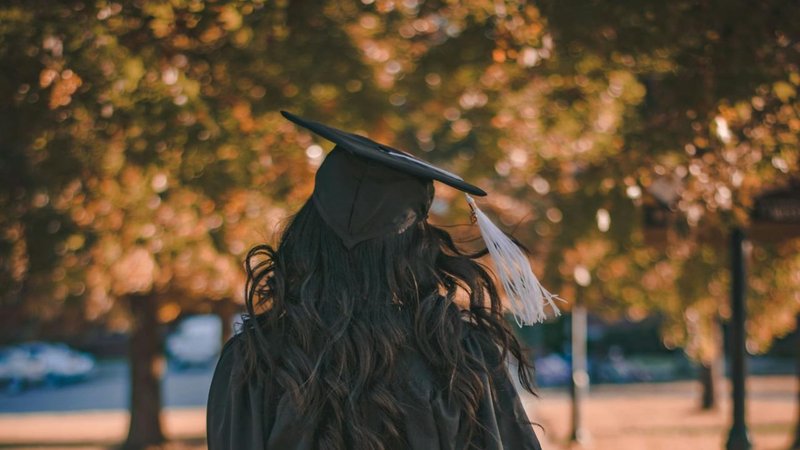Laura’s 13-Year Battle with Student Loan Debt
United States North America Higher Education News by Erudera News Mar 31, 2024

Editor’s note: Laura Cunningham, a full-time professor and a part-time therapist, shares her student loan story as part of Erudera’s “Degrees of Debt” series. The series delve into how student loan borrowers ended up in debt, efforts to overcome the struggle, triumphs, and more.
In a world where education has become increasingly costly, especially in the last 40 years, many people struggle to afford it. Hence, they find themselves in huge student debt. All this for the most basic human right.
The stories of student loan borrowers often reflect a harsh reality of financial hardships but also patience and strength to overcome challenges. One such individual is Laura Cunningham, an accomplished professor at Stetson University in Florida and a licensed mental health therapist.
Laura is 49. She grew up in Florida, where she also completed higher education. After graduating from the University of Central Florida in 2010, her initial student loan debt amounted to $150,000. Now, she owes $176,000 despite making payments for 13 years.
She took out her first student loan while studying at one of the community colleges in Florida to cover tuition and literature expenses. After that, she enrolled at the University of Florida, successfully completing two Bachelor degrees in Psychology and Women's Studies and Gender Research. During this period, Laura used the money she earned from her customer service job to repay her student loan.
She qualified for Pell Grants, a form of financial support that does not have to be repaid. However, Laura had to take out a new loan to pay for her Master’s degree at Rollins College, also for tuition and books. Throughout this time, she worked as a full-time teacher.
Even so, her journey with student loans did not end after she obtained her Master’s degree, either. She was committed to pursuing a full-time Ph.D degree, for which she had to continue taking out loans.
What Followed Next?
“I have paid my student loans for 13 years with intermittent deferments. I consolidated all my loans into one. I owed $150,000 when I graduated, and now I owe $176,000,” explains Laura.
After earning her Ph.D. degree from the University of Central Florida in 2010, Laura has served as a professor in different schools. Additionally, she holds a second job as a therapist, which helps her accelerate the student loan repayment.
As if her financial challenges in education were not enough, Laura faced a frustrating situation with United Health Care, a private insurance provider, while applying for Affordable Care coverage, adding to her challenges.
“They charged high monthly costs and covered nothing. I definitely could have used that $400 a month for food, bills, or saving for the IRS. But instead, they took it, and I still had to pay every single medical bill in full (all visits were preventive routine visits) as UHone covered nothing,” she said during the interview.
This bitter experience, which was quite a burden on her finances, pushed her to cancel the insurance with the company. Laura says she is now paying the full medical bills for 2023 for her daughter.
While speaking about the student loan issue overall, she says this system is preventing her from actively participating as a consumer in the economy. She is skeptical that she will ever manage to completely repay the debt she owes.
“I don’t even need to keep a good credit score anymore because I will not be able to buy anything. So student loans (in the current economy) kind of breaks the system of needing good credit,” she said, calling for all student loan debt to be canceled. “I can barely pay my bills monthly, often needing help from family, and regularly use food lines to get through my week. I rent and only own one car. I have no other possessions of note.”
A Quick Look at Student Loan Debt Statistics
Student loan debt in the United States is a national crisis with roots back in the 1960s. According to Census data, today, about 43 million Americans, or about 13 percent of the US population owe federal student loan debt.
The Federal Reserve, the central bank of the United States, reveals the total student loan debt balance in the United States has increased by 66 percent in the past ten years, exceeding $1.77 trillion in the first quarter of 2023. This amount is up from $619 billion in quarter one of 2008.
Data by College Board indicate 54 percent of students with Bachelor’s degrees graduated while still owing student debt. On average, these students graduated with a debt of $29,100 during the 2020/21 academic year.
The American Association of University Women (AAUW) reports that women usually borrow more than men for education, holding nearly two-thirds of the total student loan debt in the US.
Figures show that, on average, women who complete a Bachelor’s program owe $2,700 more debt than men upon graduation. Black adults are also more likely to hold more student loan debt.
According to figures from the National Center for Education Statistics, based on ethnicity, student loan borrowers hold the following amounts of debt:
- Asian - $49,100
- Black -$58,400
- Hispanic or Latino - $41,700
- Native American - $36,900
- Pacific Islander - $46,300
- White - $43,300
A survey of 61,000 respondents by Research.com revealed that, on average, student loan borrowers need more than 20 years to pay off their debt. On the other hand, borrowers who don’t manage to get a degree need nearly 17 years to repay their student loans.
“In comparison, individuals with graduate degrees—master’s or PhD degrees—take longer to pay off their student debt. For these students, repayment usually lasts 23 years,” the report points out.
So far, Biden administration has cancelled more than $144 billion in federal student loans, providing relief to nearly 4 million borrowers.
Last year, the US Department of Education announced that over 615,000 student loan borrowers have had a total of $42 billion forgiven through the Public Service Loan Forgiveness (PSLF) program.
PSLF cancels the remaining debt of student loan borrowers after the latter have made 120 payments. To be eligible, borrowers have to make monthly payments for ten years while working full-time in public service.
Read Also:
>> Biden Approves $1.2 Billion in Student Loan Debt for Over 150,000 Borrowers
>> Student Loan Forgiveness Tax-Free Until 2025, Biden Wants to Extend Policy Permanently
© Stanley Morales | Pexels
Recent Articles
Netherlands
Jun 21, 2024
United Kingdom
Jun 20, 2024
Australia
Jun 20, 2024
United States
Jun 19, 2024
United Kingdom
Jun 18, 2024


